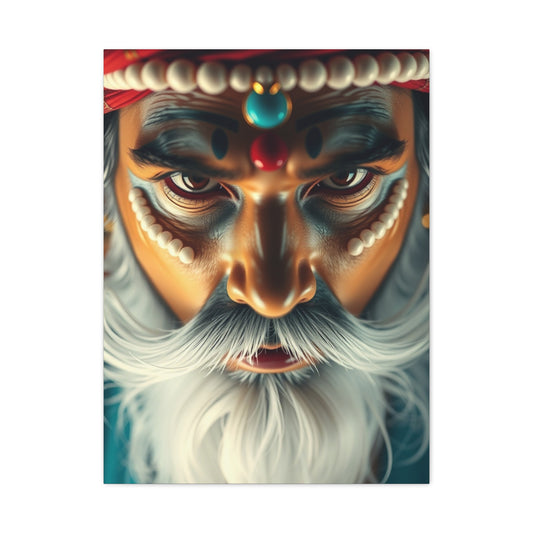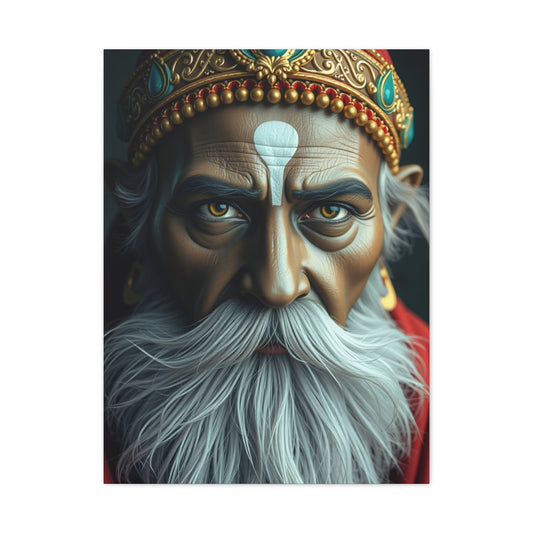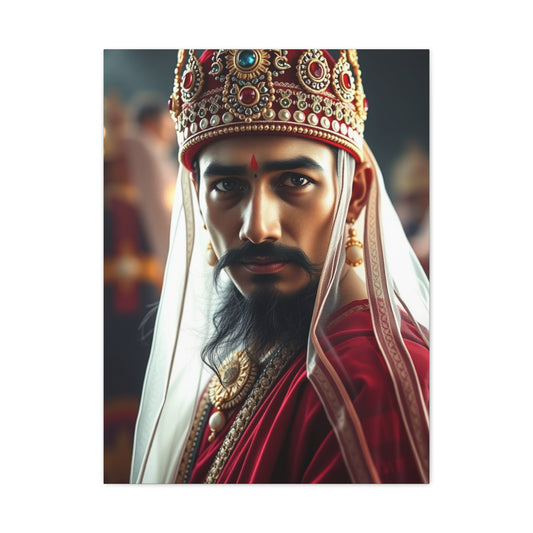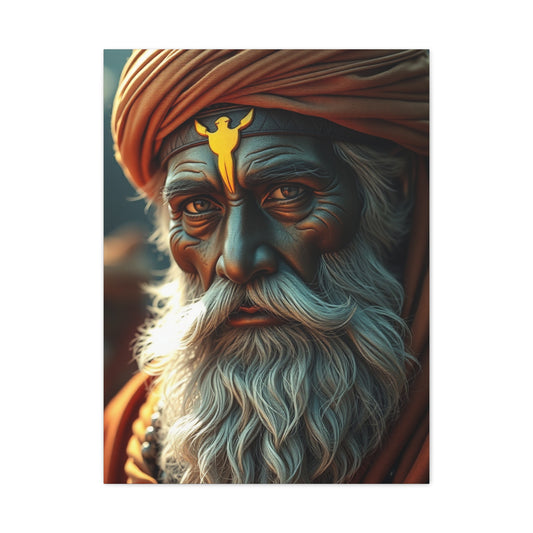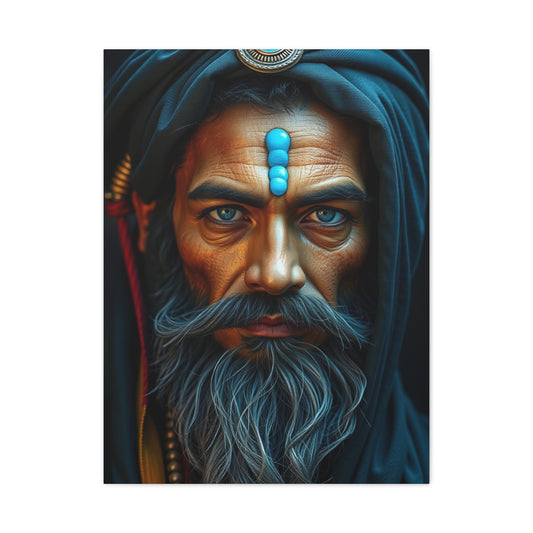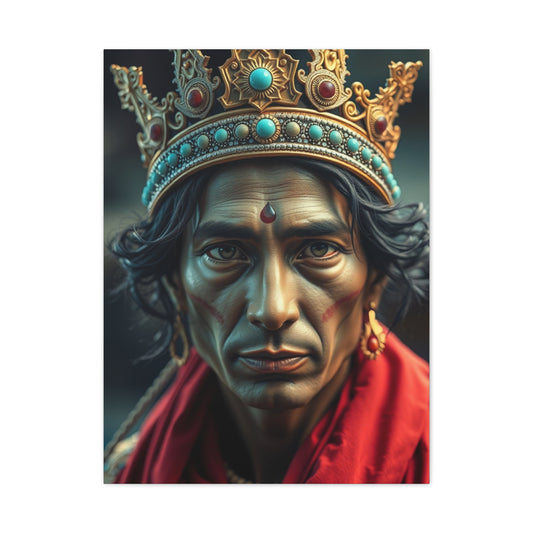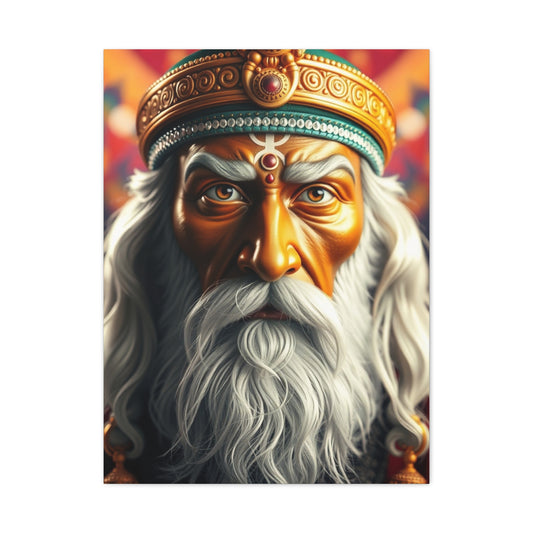The Remarkable Evolution of Bambashkart: From Rural Balkan Roots to Visionary Wall Art and Vintage Digital Collages”
Nestled within the mountainous terrain of a remote Balkan village, where cobblestone pathways wind through centuries-old architecture and the nearest metropolitan area lies countless kilometers away, emerged an extraordinary creative force known as Bambashkart. This geographical seclusion, rather than serving as an impediment to artistic development, became the catalytic foundation for an innovative approach to digital artistry that would eventually captivate international audiences.
The profound isolation experienced in this bucolic setting necessitated an unprecedented level of self-reliance and imaginative resourcefulness. Without access to conventional entertainment venues, contemporary art galleries, or sophisticated cultural institutions that urban dwellers typically take for granted, Bambashkart discovered that creativity becomes not merely a luxury but an essential survival mechanism for maintaining psychological equilibrium and intellectual stimulation.
This environmental circumstance fostered an intrinsic understanding of how limitation breeds innovation, where scarcity of external stimulation compels the mind to generate its own elaborate internal landscapes. The artist's formative years were characterized by an intensive exploration of imaginative territories, developing a unique visual vocabulary that would later manifest in his distinctive vintage digital collages.
The rustic charm of Balkan village life, with its emphasis on traditional craftsmanship, folk artistry, and intergenerational storytelling, provided an unconscious foundation for understanding the power of visual narrative. Ancient techniques of weaving, pottery, and woodcarving that permeated the local culture subtly influenced his later appreciation for layered composition and textural complexity that would become hallmarks of his digital methodology.
Maternal Intervention Redirects Academic Trajectory Toward Artistic Fulfillment
The pivotal moment in Bambashkart's educational journey occurred through an unexpected maternal decision that would fundamentally alter his professional trajectory. Initially harboring aspirations toward software engineering, with its promise of technological mastery and logical problem-solving, he envisioned a future embedded within the rapidly expanding digital infrastructure that was transforming contemporary society.
However, his mother's intuitive understanding of her son's underlying creative temperament led to an autonomous enrollment decision that bypassed his stated preferences entirely. This unilateral choice to register him for comprehensive art education rather than technical programming courses initially generated considerable resistance and bewilderment from the young student who had already mentally committed to a completely different academic path.
The art curriculum encompassed traditional sculptural techniques, requiring intensive hands-on manipulation of clay, stone, and various moldable materials. Students learned to conceptualize three-dimensional forms, understanding how light interacts with surface textures and how spatial relationships create emotional resonance within physical compositions. These foundational exercises in dimensional thinking would later prove invaluable when transitioning to digital environments where similar principles apply despite the absence of tangible materials.
Drawing instruction emphasized observational accuracy, proportional relationships, and the translation of complex visual information onto two-dimensional surfaces. Students spent countless hours developing hand-eye coordination, learning to perceive subtle gradations in shadow and highlight, and understanding how linear elements can convey movement, emotion, and narrative content. These skills formed the bedrock of visual literacy that would eventually inform his sophisticated approach to digital collage composition.
Graphic arts education introduced concepts of design hierarchy, color theory, typographical relationships, and the psychological impact of visual arrangements. Students explored how different combinations of elements could evoke specific emotional responses, create sense of movement or stability, and communicate complex ideas through purely visual means. This systematic understanding of graphic communication principles became instrumental in his later ability to orchestrate vintage elements into cohesive contemporary statements.
As academic progression continued, initial resistance gradually transformed into grudging appreciation, then eventually into profound gratitude for his mother's prescient intervention. The realization dawned that artistic education aligned more authentically with his inherent temperament and cognitive preferences than the rigid logical structures that characterize software engineering disciplines.
Educational Transition Toward Information Communication Technology Integration
Following completion of secondary education within the familiar confines of his village environment, Bambashkart embarked upon a significant geographical and academic transition by relocating to a different municipality to pursue advanced studies in Information and Communication Technology at a prestigious technical university. This migration represented not merely a change of educational focus but a complete upheaval of social, cultural, and environmental circumstances.
The academic program demanded mastery of complex technological systems, programming languages, database management, network architecture, and digital communication protocols. Students were required to demonstrate competency across multiple technological platforms while simultaneously developing theoretical understanding of how information systems integrate within contemporary organizational structures.
These years presented unprecedented challenges that tested not only intellectual capacity but also psychological resilience and adaptability. The combination of rigorous academic demands, social displacement from familiar community networks, and the pressure to master rapidly evolving technological concepts created a perfect storm of stress and uncertainty that the artist later characterized as the most difficult period of his entire existence.
Financial constraints added another layer of complexity to the educational experience, requiring careful budgeting, part-time employment opportunities, and creative problem-solving to maintain basic living standards while pursuing academic excellence. The contrast between rural village simplicity and urban educational demands created a cultural dissonance that required considerable psychological adjustment and personal growth.
Despite these formidable obstacles, the determination to complete the degree program never wavered. The combination of artistic sensibility developed during earlier educational phases with technical competency acquired through ICT studies created a unique intellectual hybrid that would prove invaluable for future creative endeavors. This interdisciplinary foundation enabled a sophisticated understanding of both aesthetic principles and technological capabilities that few artists possess.
The successful completion of this challenging academic program generated not only professional credentials but also profound personal confidence in the ability to overcome seemingly insurmountable difficulties through persistent effort and strategic thinking. This resilience would become a defining characteristic of his artistic practice, enabling him to push creative boundaries and experiment with innovative techniques despite limited resources.
Revolutionary Emergence of Digital Artistic Expression Throughout Contemporary History
The genesis of digital art represented a paradigm shift in creative expression that fundamentally altered the relationship between artistic conception and material execution. Unlike traditional artistic mediums that required physical materials, specialized tools, and dedicated workspace environments, digital art democratized creative potential by making sophisticated artistic capabilities accessible through commonly available technology.
This technological revolution occurred through unprecedented collaboration between creative visionaries and technical innovators, bridging previously distinct disciplines of art and engineering. Scientists and programmers worked alongside painters, sculptors, and designers to develop software applications that could translate artistic intentions into digital reality with unprecedented precision and flexibility.
The convergence of artistic sensibility with technological capability created entirely new categories of creative expression that had never existed throughout human history. Digital mediums offered possibilities for layering, transparency, infinite undo capabilities, non-destructive editing, and scale manipulation that surpassed anything achievable through traditional techniques.
For artists like Bambashkart, who possessed both aesthetic training and technical competency, digital platforms provided the perfect intersection of creative vision and technological implementation. The computer became not merely a tool but an extension of artistic consciousness, capable of executing complex manipulations that would be impossible or prohibitively time-consuming through conventional methods.
The democratization of advanced artistic capabilities through digital technology eliminated many traditional barriers that had historically limited creative expression to those with access to expensive materials, specialized equipment, and formal studio spaces. A sophisticated artistic vision could now be realized using nothing more than a computer and appropriate software applications.
Innovative Vintage Collage Methodology Through Digital Manipulation Techniques
Bambashkart's distinctive artistic approach centers upon the systematic deconstruction and reconstruction of vintage visual elements through sophisticated digital manipulation techniques. This methodology involves sourcing historical imagery, advertisements, photographs, and graphic elements from bygone eras, then subjecting these materials to extensive digital transformation processes that extract their essential aesthetic qualities while embedding them within entirely new narrative contexts.
The vintage collage process begins with extensive research into historical visual archives, seeking images that possess particular emotional resonance, compositional strength, or cultural significance. These source materials might include mid-century advertisements, classical portrait photography, antique botanical illustrations, or architectural documentation from previous decades. Each element is carefully selected not merely for its individual aesthetic merit but for its potential contribution to larger compositional arrangements.
Once suitable vintage elements are identified and digitally acquired, the transformation process begins through systematic manipulation using advanced software capabilities. Colors are adjusted to create harmony between disparate sources, edges are refined to eliminate visual discontinuities, and scale relationships are modified to establish proper hierarchical arrangements within the composition.
The retro elements undergo extensive reworking that preserves their essential character while adapting them to contemporary aesthetic sensibilities. This process requires delicate balance between historical authenticity and modern visual language, ensuring that vintage charm remains intact while creating compositions that resonate with contemporary audiences.
Surreal artwork emerges through unexpected juxtapositions of elements that would never coexist within conventional reality. By combining vintage portraits with modern landscapes, historical objects with contemporary contexts, or classical architecture with fantastical elements, Bambashkart creates visual narratives that challenge perception and invite extended contemplation.
The genre-defying nature of this work resists easy categorization within traditional artistic movements or styles. While clearly rooted in collage traditions established by early twentieth-century avant-garde artists, the digital methodology and vintage source material create something entirely unique that exists within its own aesthetic category.
Evolutionary Artistic Development Across Multiple Creative Phases and Collections
The artistic evolution of Bambashkart's work demonstrates remarkable adaptability and continuous experimentation within his established aesthetic framework. Rather than maintaining rigid stylistic consistency, his creative output reveals ongoing exploration of different thematic territories, color palettes, and compositional approaches that keep the work fresh and unpredictable.
While maintaining recognizable stylistic elements that create coherent artistic identity, each new project introduces subtle variations that prevent the work from becoming formulaic or repetitive. This balance between consistency and innovation requires sophisticated understanding of what elements constitute the essential character of the work versus which aspects can be modified without losing artistic integrity.
The Kill Them With Love collection represents one particularly memorable thematic exploration that demonstrates his ability to infuse vintage imagery with contemporary social commentary. By depicting classic Hollywood actors like Dean Martin in surreal scenarios where traditional weapons are replaced with flowering botanical elements, the artist creates powerful visual metaphors about the transformative power of love over violence.
These compositions achieve their impact through careful juxtaposition of contradictory elements: the masculine iconography of mid-century entertainment culture combined with delicate floral imagery creates cognitive dissonance that forces viewers to reconsider assumptions about power, masculinity, and the nature of conflict resolution. The vintage aesthetic provides nostalgic comfort while the underlying message delivers contemporary relevance.
The Mountain Beach and Santorini Greece series explores landscape compositions that blend geographically impossible combinations with otherworldly color treatments. By placing mountainous terrain directly adjacent to beach environments and applying ethereal color palettes that suggest extraterrestrial atmospheres, these works create dreamlike environments that exist only within imagination.
These landscape compositions demonstrate sophisticated understanding of how color psychology affects emotional response to imagery. The unique coloring schemes transport familiar geographical elements into fantastical territories that feel simultaneously alien and inviting, creating visual experiences that linger in memory long after initial viewing.
The Golden Grenade collection focuses on everyday objects transformed through unexpected contextual placement and surreal atmospheric effects. Common items are elevated to artistic significance through their integration with cloud formations, botanical elements, and vintage aesthetic treatments that imbue mundane objects with mysterious significance.
Contemporary Cannabis Culture Integration Within Artistic Expression
Recent developments in Bambashkart's artistic output reflect growing cultural acceptance and legalization of cannabis within contemporary society. This thematic expansion demonstrates his ability to respond to evolving social attitudes while maintaining artistic integrity and aesthetic sophistication that characterizes his established body of work.
The marijuana-focused artwork represents more than simple trend-following or commercial opportunism; it reflects genuine engagement with changing cultural values and the desire to contribute meaningfully to contemporary conversations about personal freedom, medical alternatives, and the gradual dismantling of prohibition-era attitudes toward cannabis consumption.
These cannabis-themed compositions maintain the same sophisticated vintage aesthetic and surreal juxtaposition techniques that define his other collections. Rather than resorting to crude stereotypes or juvenile imagery often associated with cannabis culture, the work elevates the subject matter through artistic sophistication that treats the topic with appropriate dignity and complexity.
The integration of cannabis imagery within vintage collage framework creates interesting temporal tensions between historical prohibition attitudes and contemporary acceptance. By placing cannabis elements within nostalgic aesthetic contexts, the artist highlights the evolution of social attitudes and challenges viewers to consider how cultural values change over time.
This thematic expansion also demonstrates the versatility of his established artistic methodology. The same techniques used to create flower-bullet weapons or impossible landscapes prove equally effective for exploring cannabis culture, proving that strong artistic frameworks can accommodate diverse subject matter without losing their essential character.
Musical Influences Shaping Artistic Atmosphere and Creative Process
The profound connection between Bambashkart's musical preferences and his visual artistic output reveals the interdisciplinary nature of his creative consciousness. Rather than existing as separate aesthetic experiences, music and visual art function as complementary aspects of a unified artistic vision that permeates all aspects of his creative practice.
Chill-Hop represents a musical genre that emphasizes relaxed rhythmic patterns, jazz-influenced harmonic structures, and atmospheric production techniques that create contemplative listening experiences. This musical aesthetic directly correlates with the dreamlike quality of his vintage collages, where elements float through compositions with the same unhurried grace that characterizes Chill-Hop's temporal flow.
Chill Jazz influences contribute sophisticated harmonic sensibilities and improvisational freedom that manifest visually through unexpected color combinations and spontaneous compositional decisions. The same spirit of musical improvisation that allows jazz musicians to explore uncharted harmonic territories enables artistic exploration of visual combinations that might seem illogical but prove emotionally resonant.
Classical music appreciation brings formal compositional understanding and appreciation for structural complexity that informs the sophisticated layering techniques evident throughout his digital collages. The same principles that govern symphonic orchestration apply to visual composition, where different elements must work together harmoniously while maintaining their individual character.
Chill House music provides rhythmic foundation and electronic production aesthetics that align with his digital methodology. The synthetic textures and programmed rhythmic patterns that characterize electronic music find visual equivalents in the digital manipulation techniques used to transform vintage source material into contemporary artistic statements.
Specific artists within his playlist demonstrate the eclectic nature of his musical taste and its corresponding influence on visual output. Mounika's atmospheric production techniques parallel the ethereal quality of his landscape compositions. KOTA The Friend's thoughtful lyricism reflects the narrative complexity embedded within his collage arrangements. Jorja Smith's soulful vocal approach corresponds to the emotional depth that underlies even his most surreal visual creations. Onyx's energetic delivery provides counterpoint intensity that occasionally surfaces in more dynamic compositional arrangements.
Personal Aesthetic Philosophy Through Fashion and Individual Expression
The personal style choices that characterize Bambashkart's daily presentation reveal important insights into the philosophical foundations that underlie his artistic practice. His self-described rebellious fashion approach demonstrates conscious rejection of conventional aesthetic expectations and mainstream cultural pressures that typically influence personal presentation decisions.
The iconic black sweatshirt that has become his signature garment carries particular significance beyond mere clothing preference. Acquired for merely forty cents at a thrift store three years prior, this garment represents several important values that permeate his artistic philosophy: resourcefulness, rejection of commercial fashion industry manipulation, appreciation for pre-owned items with history and character, and the understanding that authentic style cannot be purchased but must be cultivated through personal conviction.
This fashion choice demonstrates how true artistic sensibility extends beyond formal creative output to encompass all aspects of personal presentation and lifestyle decisions. The same aesthetic principles that govern his digital collages also inform his clothing choices, creating coherent personal brand that reflects authentic individual character rather than market-driven trend adoption.
The thrift store origin of his signature garment connects to broader themes within his artistic work, particularly the reclamation and transformation of vintage elements. Just as his digital collages give new life to historical imagery, his fashion choices demonstrate how discarded items can acquire fresh significance through conscious selection and personal investment.
The rebellious nature of his fashion aesthetic correlates with the unconventional approaches that characterize his artistic methodology. By refusing to conform to expected presentation standards, he maintains creative independence that enables authentic artistic expression without compromise to commercial pressures or social expectations.
This personal aesthetic philosophy demonstrates integration between life and art that characterizes truly committed artistic practice. Rather than compartmentalizing creativity into separate professional domain, his entire lifestyle becomes expression of artistic values and aesthetic convictions that inform every aspect of daily existence.
Agricultural Pursuits and Sustainable Living Philosophy Integration
The cultivation of tomatoes within Bambashkart's personal garden represents more than simple hobby gardening; it demonstrates commitment to sustainable living practices and direct connection with natural processes that provide important counterbalance to his digitally-focused artistic practice. This agricultural engagement offers tactile experiences and organic rhythms that complement the virtual environments where his professional work develops.
Growing food personally requires understanding of soil composition, seasonal timing, water management, and pest control that connects the artist to fundamental life processes often overlooked within contemporary digital culture. The patience required for successful cultivation parallels the methodical approach needed for creating sophisticated digital collages, where rushing the process typically yields inferior results.
The choice to focus specifically on tomatoes reflects practical considerations as well as aesthetic preferences. Tomatoes offer relatively straightforward cultivation requirements while providing substantial nutritional value and culinary versatility. The vibrant red coloration of ripe tomatoes also creates visual appeal that satisfies artistic sensibilities while serving practical dietary needs.
This agricultural activity provides important psychological benefits that support creative productivity within his primary artistic practice. The physical activity involved in garden maintenance offers healthy contrast to extended periods spent working at computer screens. The outdoor environment provides exposure to natural light cycles and fresh air that promote general wellbeing and mental clarity.
The seasonal nature of tomato cultivation creates natural rhythm that helps structure annual creative cycles. Planting, tending, harvesting, and preservation activities provide regular breaks from digital work while maintaining productive engagement that contributes to household sustainability and personal satisfaction.
The connection between growing food and creating art reflects deeper philosophical understanding about creativity, sustainability, and authentic living that informs all aspects of his lifestyle choices. Both activities involve nurturing something from initial conception through full development, requiring patience, attention to detail, and willingness to adapt to unexpected circumstances.
Intimate Relationships and Domestic Life Supporting Creative Practice
The presence of meaningful personal relationships within Bambashkart's life provides essential emotional foundation that supports sustained creative productivity and artistic development. His partnership with his girlfriend creates stable domestic environment that enables focus on demanding artistic practice while maintaining human connection and emotional fulfillment that prevent creative isolation.
Sharing living space with a feline companion adds another dimension to daily domestic experience that influences artistic sensibility in subtle but important ways. Cats possess natural aesthetic appreciation and demonstrate independent creative behavior through their spontaneous play activities, spatial exploration, and attention to environmental details that often escape human notice.
The observational opportunities provided by living with a cat offer insights into non-human aesthetic responses and behavioral patterns that can inform artistic understanding of movement, composition, and spatial relationships. Cats naturally arrange themselves within environmental contexts with instinctive understanding of visual harmony that reflects principles also applicable to artistic composition.
Family relationships maintain connection to cultural roots and provide ongoing emotional support that enables artistic risk-taking and creative experimentation. The security provided by stable family connections allows artists to explore challenging territory and push creative boundaries without fear of complete social isolation or loss of identity anchoring.
These personal relationships create necessary balance between the solitary nature of artistic practice and the human need for meaningful social connection. Creative work often requires extended periods of individual focus and introspection that can lead to psychological isolation without adequate interpersonal engagement.
The domestic stability provided by these relationships enables long-term artistic development that might be impossible within more chaotic or unstable living situations. Consistent daily routines and reliable emotional support create optimal conditions for sustained creative productivity and artistic growth over extended periods.
Technical Methodology and Digital Tool Mastery for Vintage Collage Creation
The sophisticated digital techniques employed in Bambashkart's vintage collage creation require mastery of advanced software capabilities and deep understanding of digital imaging principles that extend far beyond basic computer literacy. His technical proficiency represents years of dedicated study and experimentation with complex digital tools that enable the seamless integration of vintage elements into contemporary artistic statements.
Professional-grade image editing software provides the foundation for his digital methodology, offering precise control over individual pixel manipulation, layer management, color correction, and compositional arrangement. These applications include advanced features for selection refinement, edge feathering, transparency control, and non-destructive editing that allow extensive experimentation without permanently altering source materials.
Color grading techniques enable the harmonious integration of elements sourced from different time periods and photographic conditions. Vintage imagery often exhibits color casts, exposure variations, and contrast characteristics that reflect the technological limitations of earlier photographic processes. Sophisticated color correction tools allow these disparities to be minimized while preserving the essential character that makes vintage elements aesthetically appealing.
Layer blending modes provide powerful capabilities for creating seamless transitions between disparate visual elements. By adjusting how different layers interact mathematically with underlying imagery, artists can achieve effects ranging from subtle transparency to dramatic color shifts that would be impossible through conventional artistic techniques.
Masking techniques enable precise control over which portions of different source images contribute to final compositions. Complex selections can isolate specific elements while preserving fine details like hair, fabric textures, or architectural ornamentation that require careful handling to maintain visual believability.
Texture manipulation tools allow the addition or modification of surface qualities that help integrate elements from different sources. By adjusting grain structure, surface roughness, and reflective characteristics, disparate elements can be made to appear as though they originated within the same photographic environment.
Scale and perspective adjustments ensure that elements borrowed from different sources maintain proper size relationships and viewing angles within final compositions. These technical capabilities allow creative freedom in combining elements that would be impossible to photograph together in reality.
Aesthetic Philosophy Bridging Historical Nostalgia with Contemporary Relevance
The underlying aesthetic philosophy that governs Bambashkart's artistic practice represents sophisticated understanding of how historical visual elements can be recontextualized to address contemporary cultural concerns while maintaining respect for original sources and their cultural significance. This approach requires careful balance between nostalgic appreciation and critical contemporary perspective.
Vintage imagery possesses inherent emotional appeal that stems from its association with perceived simpler times, superior craftsmanship, and cultural values that contrast with contemporary concerns about technological alienation, environmental degradation, and social fragmentation. This nostalgic attraction provides immediate emotional connection that makes vintage-inspired artwork accessible to diverse audiences.
However, uncritical nostalgia can become problematic when it ignores historical realities or promotes oversimplified understanding of complex cultural periods. Bambashkart's approach acknowledges the appeal of vintage aesthetics while avoiding romanticization that might obscure important historical truths or contemporary insights.
The transformation of vintage elements through digital manipulation creates new meanings that comment on both historical and contemporary contexts simultaneously. By placing vintage imagery within surreal frameworks, the artist highlights the constructed nature of historical representation while creating space for new interpretive possibilities.
This aesthetic approach enables commentary on contemporary issues through historical visual vocabulary that provides emotional accessibility and cultural resonance. Rather than confronting viewers with harsh contemporary realities, the vintage framework creates inviting entry points for deeper consideration of complex social and cultural questions.
The juxtaposition of historical elements with contemporary sensibilities creates productive tension that encourages critical thinking about cultural change, technological impact, and evolving human values. These compositions function as visual essays that explore relationships between past and present without providing simplistic answers or conclusions.
Cultural Impact and Audience Reception Across Global Digital Platforms
The international accessibility provided by digital distribution platforms enables Bambashkart's work to reach audiences far beyond the geographical constraints that might have limited traditional artistic careers based in remote locations. Social media networks, online galleries, and digital marketplaces create unprecedented opportunities for direct artist-audience connection without intermediary gatekeepers.
The universal appeal of vintage aesthetics transcends cultural and linguistic barriers that might limit other forms of contemporary art. Visual elements from mid-twentieth century popular culture possess international recognition that makes his work immediately accessible to viewers across different national and cultural backgrounds.
Digital reproduction capabilities allow unlimited dissemination without quality degradation, enabling his artwork to maintain full visual impact regardless of viewing context. Unlike traditional artistic mediums that suffer quality loss through reproduction processes, digital art can be distributed in its original resolution and color accuracy to any location with internet connectivity.
The interactive possibilities provided by digital platforms enable direct communication between artist and audience that was impossible through traditional gallery systems. Comments, shares, and direct messages create ongoing dialogue that informs artistic development and helps identify resonant themes that deserve further exploration.
Global audience exposure provides valuable feedback about cultural reception differences and helps identify universal themes that transcend local cultural contexts. This information proves invaluable for artistic development and enables strategic decisions about thematic focus and stylistic development.
The democratic nature of digital art distribution enables emerging artists to build international recognition based purely on artistic merit rather than institutional connections or geographical advantages. This accessibility revolution has fundamentally altered traditional art world dynamics and created opportunities for artists from previously marginalized locations.
Future Artistic Development and Expanding Creative Horizons
The trajectory of Bambashkart's artistic evolution suggests continued expansion into new thematic territories while maintaining the sophisticated vintage aesthetic that has established his unique position within contemporary digital art. Future developments likely will build upon established technical mastery while exploring fresh cultural themes and compositional approaches.
The growing acceptance of digital art within traditional institutional frameworks creates expanding opportunities for gallery representation, museum exhibitions, and collector interest that previously focused exclusively on traditional mediums. This institutional validation provides new platforms for artistic presentation while maintaining the democratic accessibility that characterizes digital distribution.
Technological advancement in areas like artificial intelligence, virtual reality, and augmented reality present exciting possibilities for extending vintage collage methodology into immersive environments that could provide entirely new categories of artistic experience. These emerging technologies might enable three-dimensional vintage environments or interactive compositions that respond to viewer engagement.
The increasing sophistication of digital tools continues to expand creative possibilities while reducing technical barriers that previously required extensive specialized training. This democratization trend suggests that future artistic development might focus more intensively on conceptual innovation rather than technical mastery as differentiating factors.
International collaboration opportunities enabled by digital connectivity might lead to cross-cultural artistic projects that combine Bambashkart's vintage aesthetic with visual traditions from other cultural contexts. Such collaborations could produce hybrid styles that reflect globalized cultural exchange while maintaining authentic regional character.
The potential for commercial application of his aesthetic approach through licensing arrangements, merchandise development, or commissioned work creates opportunities for sustainable artistic careers that were difficult to achieve through traditional artistic pathways. This economic viability enables continued artistic development without compromising creative integrity.
Educational opportunities might emerge through workshop teaching, online course development, or mentorship programs that share technical knowledge and aesthetic insights with emerging artists interested in vintage collage methodology. This knowledge transfer could establish lasting artistic legacy beyond individual creative output.
Comprehensive Analysis of Artistic Legacy and Contemporary Significance
The artistic contribution represented by Bambashkart's vintage digital collages extends beyond individual creative achievement to encompass broader cultural significance within contemporary digital art movements and the ongoing evolution of artistic expression through technological mediation. His work demonstrates how traditional artistic principles can be successfully adapted to digital environments while creating entirely new aesthetic possibilities.
The integration of technical proficiency with sophisticated aesthetic sensibility addresses ongoing debates about the relationship between technological capability and artistic authenticity. By demonstrating that digital tools can serve genuine artistic vision rather than replacing human creativity, his work provides important counterargument to criticism that questions the legitimacy of digitally-created art.
The successful adaptation of vintage imagery for contemporary purposes illustrates productive approaches to cultural heritage preservation and reinterpretation that avoid both mindless nostalgia and dismissive modernism. This balanced approach suggests methodologies for engaging with historical culture that maintains respect while enabling creative innovation.
The geographical origin of his artistic development challenges assumptions about cultural centralization and the necessity of urban artistic communities for creative development. His success demonstrates how authentic artistic vision can emerge from any location given adequate determination, creativity, and access to appropriate technological resources.
The interdisciplinary foundation that combines formal artistic training with technical education represents increasingly important skill combinations within contemporary creative industries. This hybrid competency model might become standard preparation for future artists working within digitally-mediated creative environments.
The democratic accessibility of his artistic output through digital distribution platforms exemplifies how technological advancement can reduce traditional barriers between artists and audiences while maintaining high standards of creative quality and aesthetic sophistication.
Conclusion
The remarkable artistic journey of Bambashkart represents a compelling synthesis of traditional aesthetic principles, innovative digital methodology, and authentic creative vision that transcends geographical limitations and cultural boundaries. Emerging from the remote countryside of a Balkan village, this visionary artist has successfully transformed the constraints of rural isolation into catalytic forces for extraordinary creative development that resonates with international audiences through sophisticated vintage digital collages.
His artistic evolution demonstrates how seemingly contradictory influences can combine productively when guided by genuine creative conviction and unwavering commitment to aesthetic excellence. The unexpected maternal intervention that redirected his academic trajectory from software engineering toward comprehensive artistic education created interdisciplinary foundation that proved essential for his later success within digital creative environments. This educational background combines traditional artistic training in sculpture, drawing, and graphic arts with advanced technical competency in information and communication technology, creating unique hybrid skill set that enables sophisticated digital manipulation of vintage source materials.
The development of his distinctive aesthetic approach represents years of dedicated experimentation with digital collage techniques that honor historical source materials while embedding them within entirely new narrative contexts. By systematically deconstructing and reconstructing vintage imagery through advanced software manipulation, he creates surreal compositions that function as visual essays exploring relationships between historical nostalgia and contemporary cultural concerns. This methodology achieves remarkable balance between respect for original sources and bold creative reinterpretation that generates fresh meanings relevant to modern audiences.
The thematic evolution demonstrated across his various collections reveals sophisticated understanding of how artistic consistency can coexist with creative experimentation and growth. From the Kill Them With Love series that transforms vintage Hollywood masculinity into peaceful floral metaphors, through the impossible landscape combinations of Mountain Beach and Santorini Greece, to the mysterious object compositions of Golden Grenade and contemporary cannabis culture explorations, each project expands his artistic vocabulary while maintaining recognizable stylistic elements that create coherent artistic identity.
The profound integration between his musical preferences and visual artistic output illustrates the interdisciplinary nature of authentic creative consciousness, where chill-hop rhythms, jazz harmonies, classical structures, and electronic textures find visual equivalents within his sophisticated compositional arrangements. This musical foundation provides atmospheric guidance that influences color choices, compositional flow, and emotional resonance throughout his vintage collage creations.
His personal lifestyle choices reflect authentic commitment to artistic values that extend beyond professional creative practice to encompass fashion philosophy, sustainable agriculture, and meaningful personal relationships that support long-term creative productivity. The iconic thrift store sweatshirt, personally cultivated tomatoes, stable domestic partnerships, and strong family connections create holistic life approach that maintains creative authenticity while providing necessary emotional and practical foundation for sustained artistic development.
The technical mastery required for his sophisticated digital methodology represents significant achievement in professional competency development that enables seamless integration of disparate vintage elements into cohesive contemporary artistic statements. Advanced software capabilities, color grading techniques, layer management systems, and compositional theory combine to create technical foundation that serves authentic artistic vision rather than overwhelming it with unnecessary technological complexity.
The international accessibility achieved through digital distribution platforms demonstrates how technological advancement can democratize artistic opportunity while maintaining high standards of creative quality and aesthetic sophistication. His success challenges traditional assumptions about geographical limitations, institutional requirements, and cultural centralization that historically constrained artistic career development for creators working outside established urban artistic communities.
The cultural significance of his artistic contribution extends beyond individual creative achievement to encompass broader questions about heritage preservation, technological mediation, and the ongoing evolution of artistic expression within contemporary digital environments. His work provides productive model for engaging with historical culture that avoids both uncritical nostalgia and dismissive modernism while creating space for innovative creative reinterpretation that serves contemporary cultural needs.
Looking toward future artistic development, the expanding institutional acceptance of digital art, advancing technological capabilities, and growing international recognition create unprecedented opportunities for continued creative growth and cultural impact. The foundation established through years of dedicated artistic development positions him to explore new thematic territories, technological applications, and collaborative possibilities that could further expand the influence and significance of vintage digital collage methodology within contemporary artistic discourse.
Ultimately, Bambashkart's artistic achievement demonstrates how authentic creative vision, supported by adequate technical competency and unwavering commitment to aesthetic excellence, can transcend any external limitations and create meaningful cultural contribution that resonates across geographical, generational, and cultural boundaries, establishing lasting artistic legacy that influences both contemporary digital art practice and broader understanding of how traditional aesthetic principles can be successfully adapted to serve innovative creative expression within rapidly evolving technological contexts.

